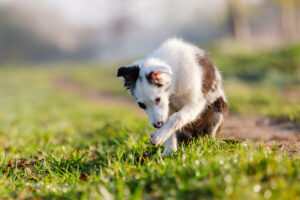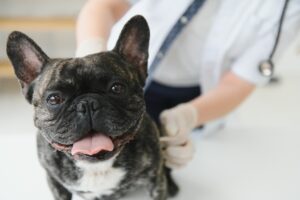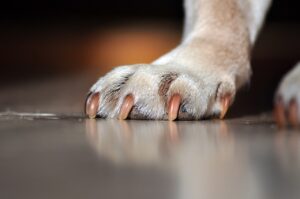If you’ve ever witnessed your dog suddenly start making a loud snorting or honking sound, looking panicked with their neck extended, you’ve probably seen a reverse sneeze in action. While it can be alarming, it’s important to know that reverse sneezing is usually a harmless, temporary episode for most dogs. Let’s delve into what it is and what might be causing it.
Understanding Reverse Sneezing
Reverse sneezing, also known as paroxysmal respiration, is when a dog rapidly inhales air through the nose instead of expelling it like a regular sneeze. This creates the characteristic loud snorting or honking noise. Episodes are typically short-lived and resolve on their own without any intervention.
Potential Triggers of Reverse Sneezing Episodes
While the exact cause of reverse sneezing isn’t always pinpointed, here are some common triggers:
- Allergens: Seasonal irritants like pollen, dust, and mold can trigger reverse sneezes in sensitive dogs.
- Irritants: Smoke, perfumes, household cleaners, and air fresheners can all irritate a dog’s nasal passages.
- Nasal mites: These tiny parasites can cause inflammation and irritation within the nose.
- Foreign bodies: Occasionally, a grass seed, blade of grass, or small object can get stuck in a dog’s nose, triggering a reverse sneeze.
- Overexcitement/play: The increased breathing rate during energetic play can sometimes induce an episode.
- Pulling on collar: Excessive pressure on the throat area from a tight collar can be a trigger.
- Anatomical factors: Brachycephalic breeds (dogs with short snouts like Pugs, Bulldogs, and Boston Terriers) may be more prone to reverse sneezing due to their narrowed nasal passages.
Diagnosing the Cause of Reverse Sneezing
Most cases of reverse sneezing don’t require a veterinary visit. However, if you notice increased frequency, longer episodes, or it seems to bother your dog, it’s wise to consult your veterinarian. They can rule out other potential respiratory issues such as:
- Upper respiratory infections
- Kennel cough
- Collapsing trachea (especially in small breeds)
When to Worry
Pay attention to these signs that might indicate something more serious:
- The frequency and length of episodes increasing
- Nasal discharge (bloody or discolored)
- Difficulty breathing outside of reverse sneezing episodes
What Can I Do to Help My Dog During a Reverse Sneezing Episode?
- Stay calm: Your dog might be startled, so a calm voice and gentle reassurance help.
- Gently massage their throat: This can encourage them to swallow, resolving the episode.
- Lightly blow in their face: This may also induce swallowing.
- Briefly cover one nostril: This simple action can sometimes stop the reverse sneeze.
Preventing Future Episodes
- Identify triggers: If you can pinpoint what often precedes an episode, try to minimize your dog’s exposure.
- Reduce exposure to irritants: Consider air purifiers and minimizing harsh cleaning products around your dog.
- Veterinarian advice: If allergies or nasal mites are suspected, your vet can recommend treatment.
Conclusion
Reverse sneezing might look scary, but for most dogs, it’s a benign and temporary occurrence. By understanding potential causes and triggers, you can help minimize your dog’s discomfort. However, if you’re ever concerned about the frequency, severity, or any accompanying symptoms, don’t hesitate to consult your veterinarian.







